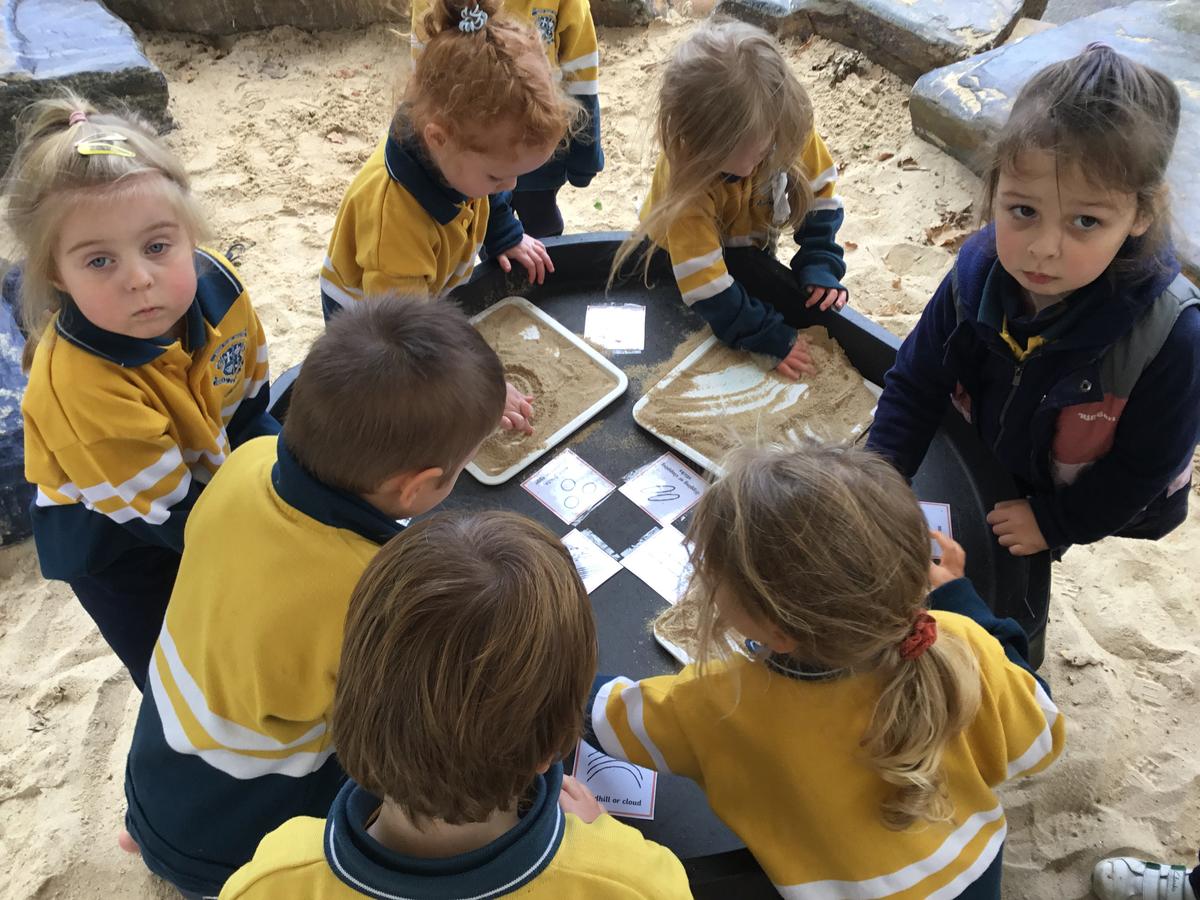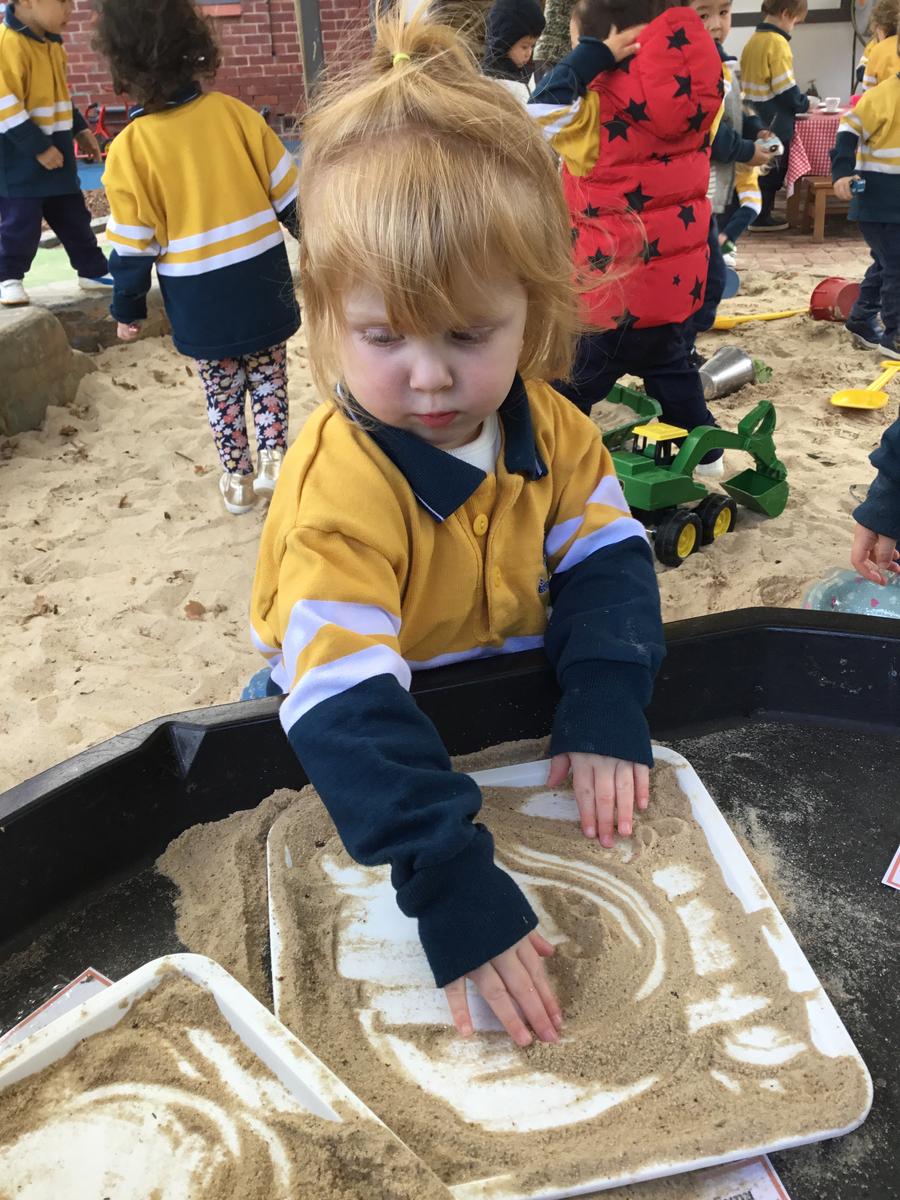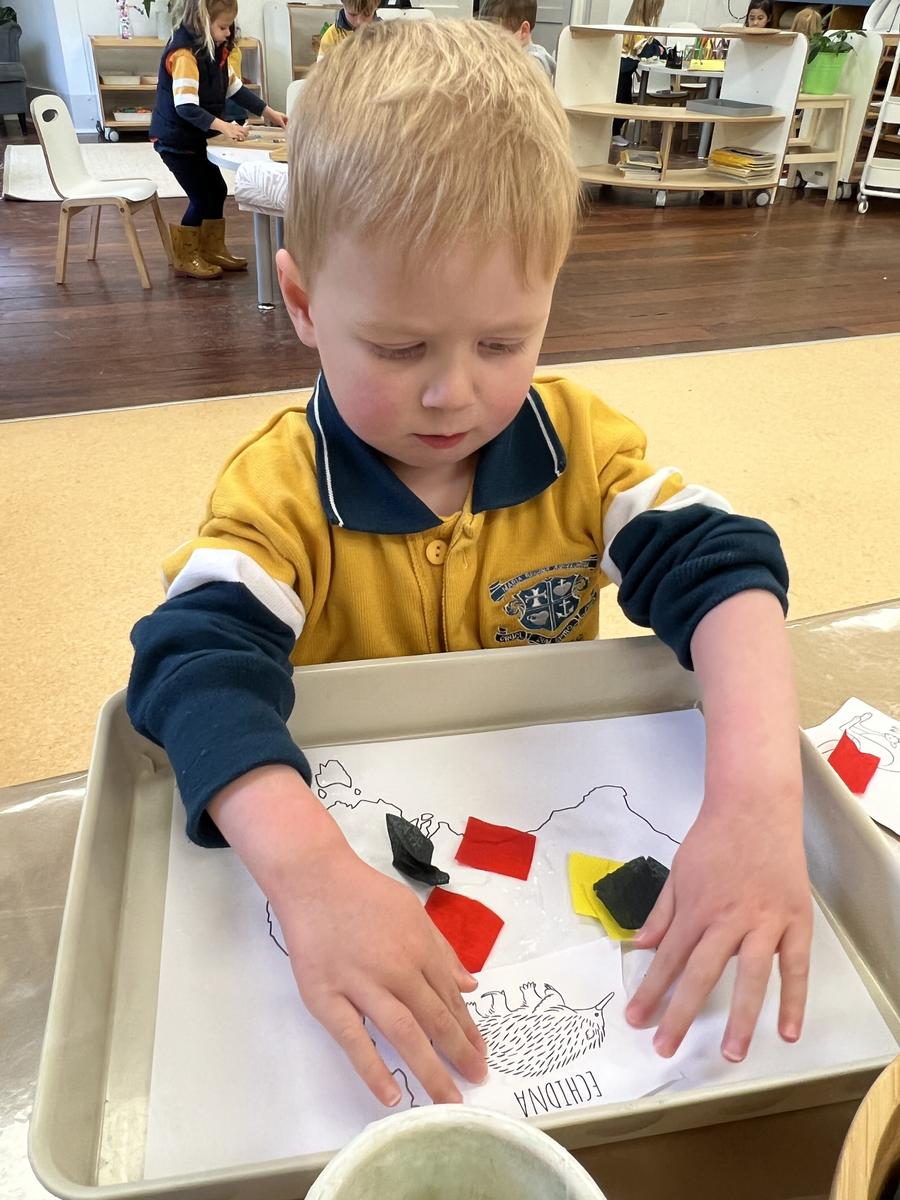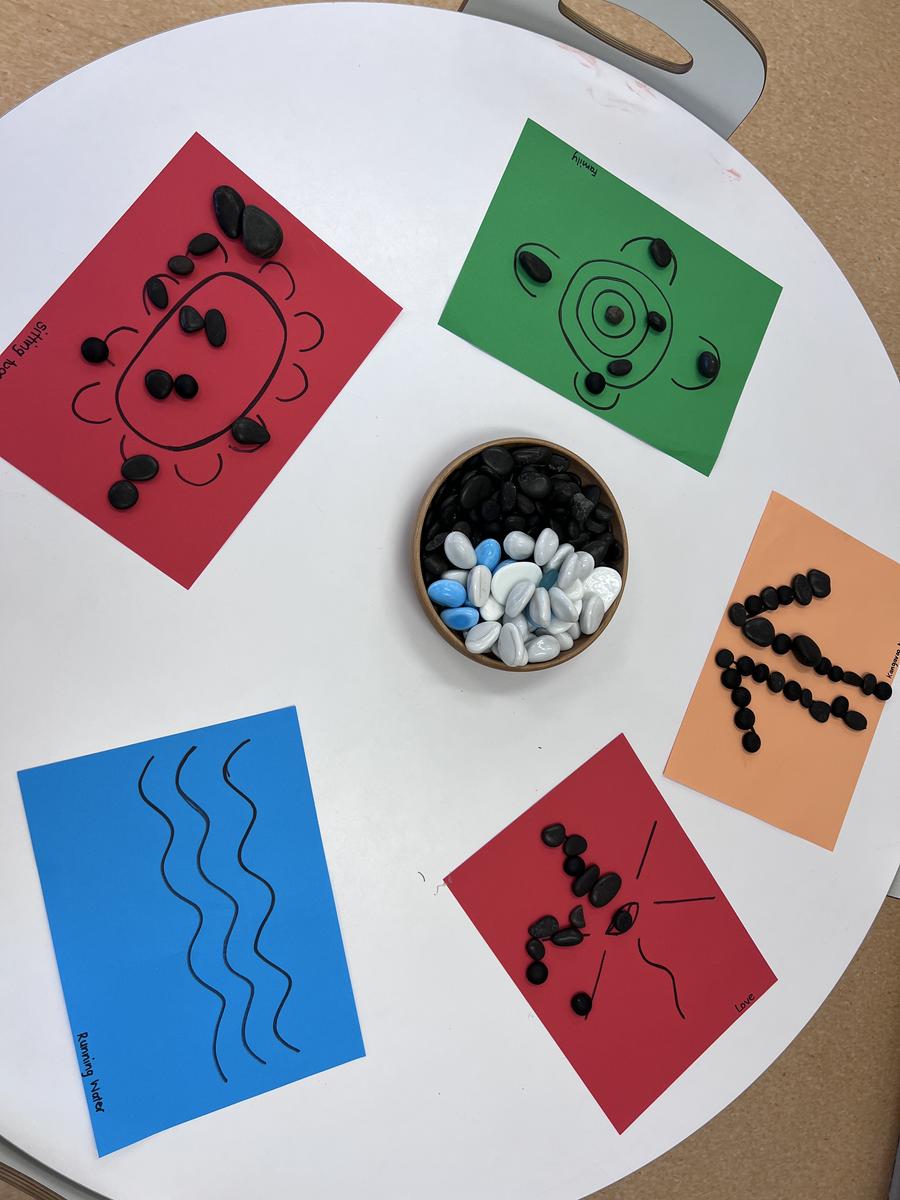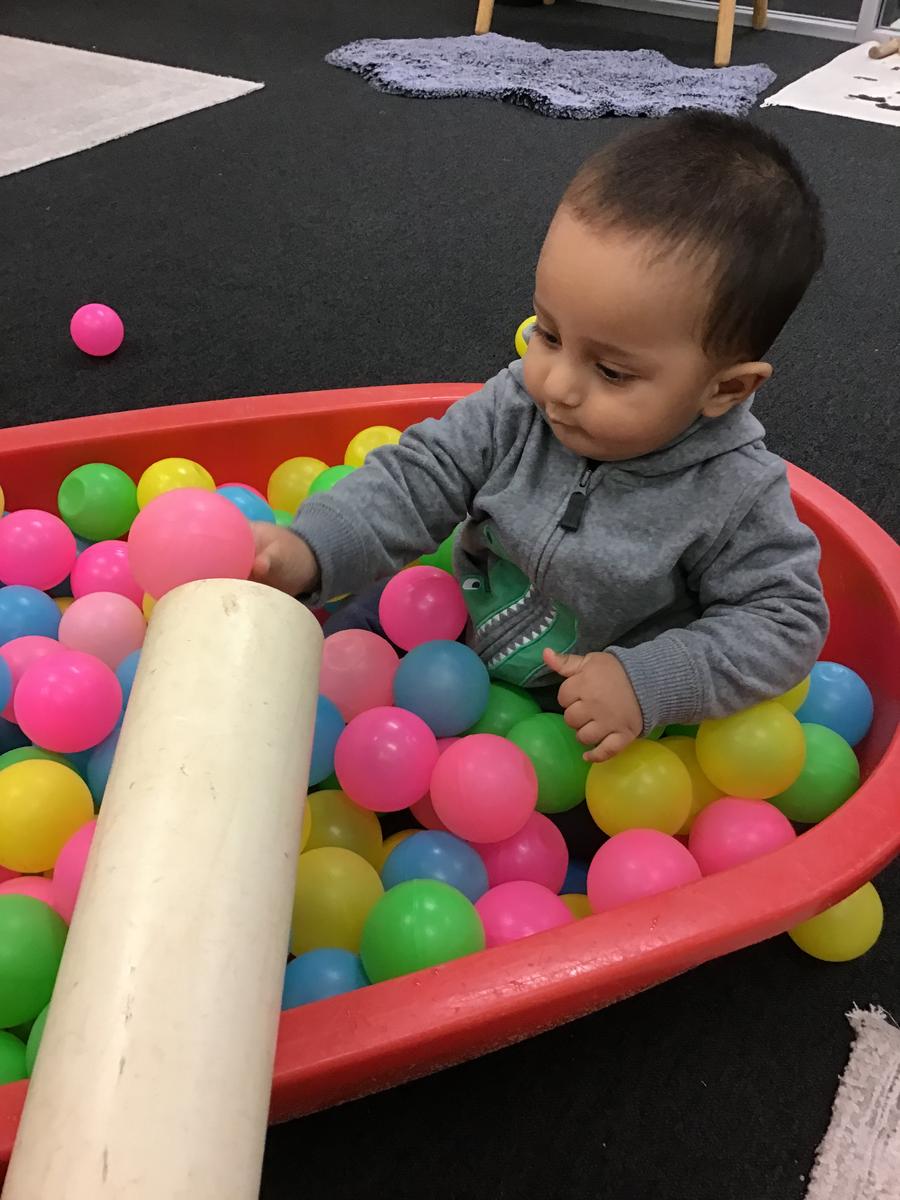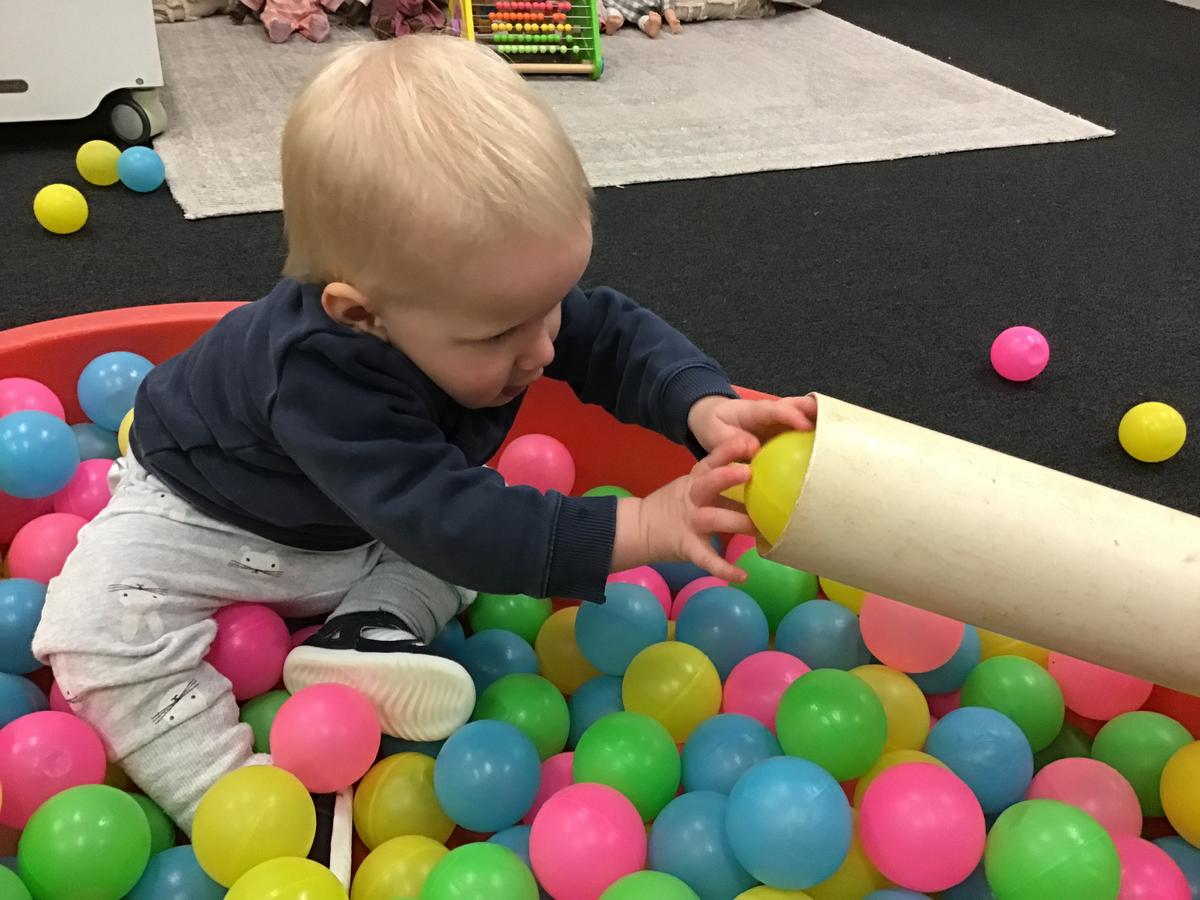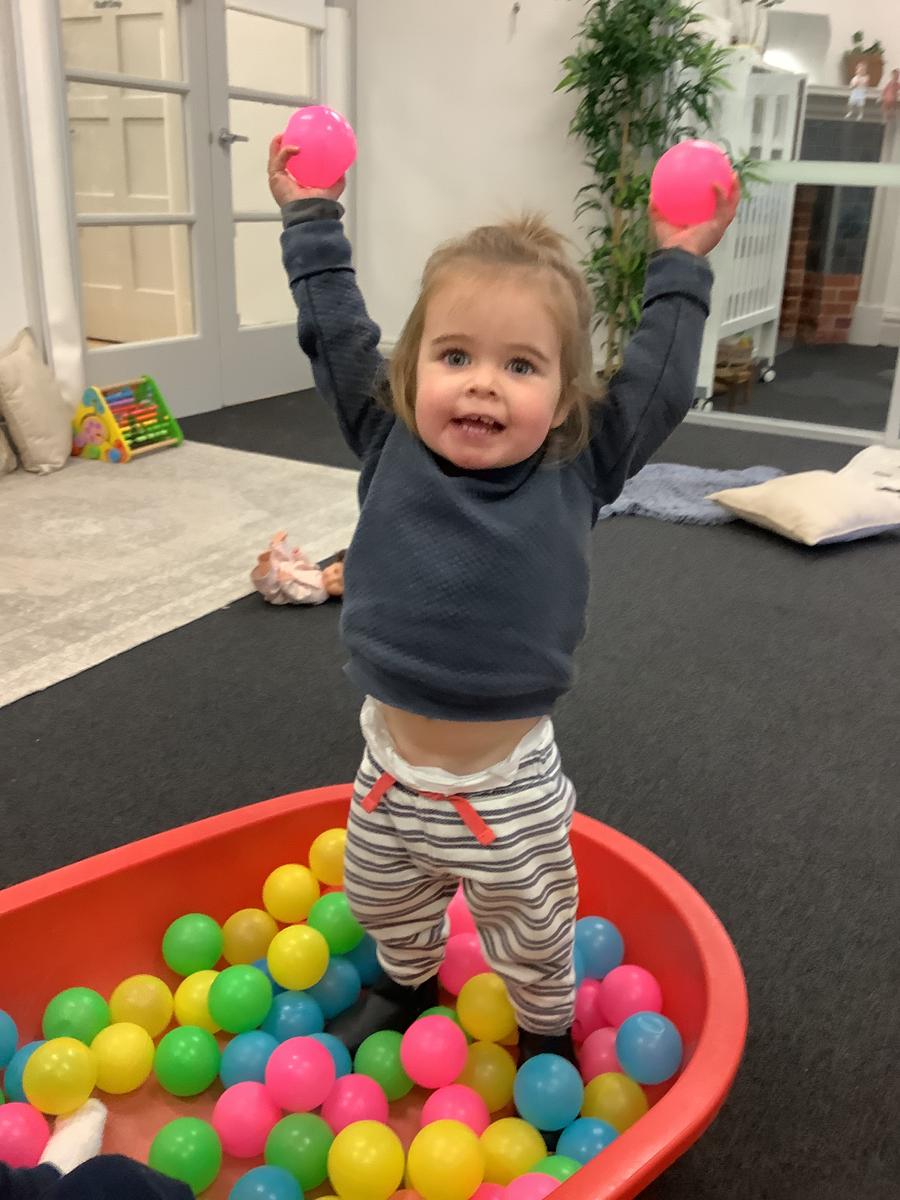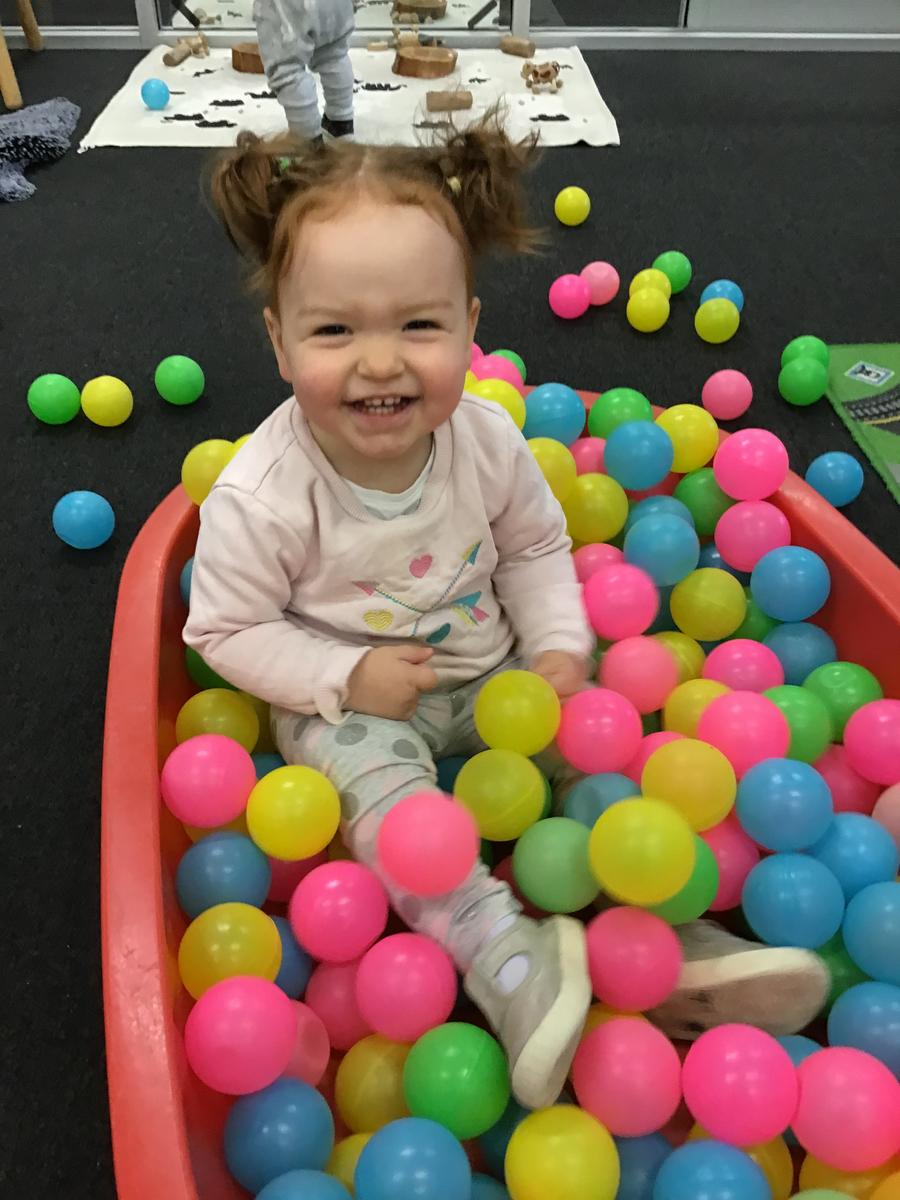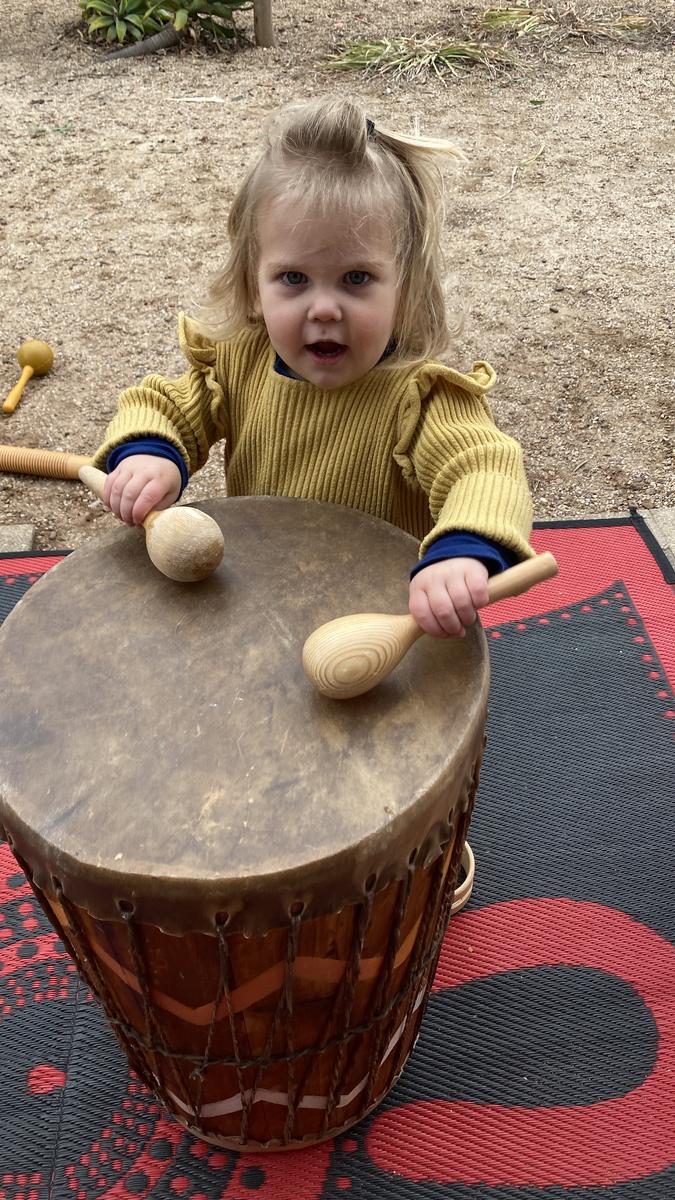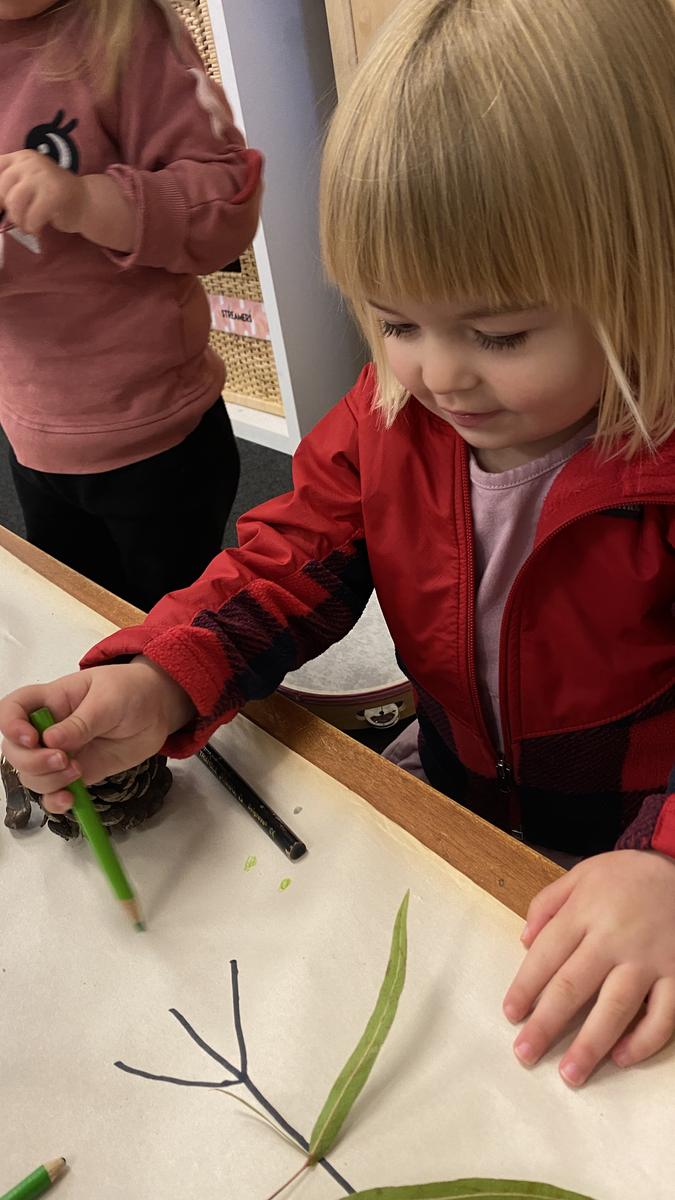Learning Across the ELC
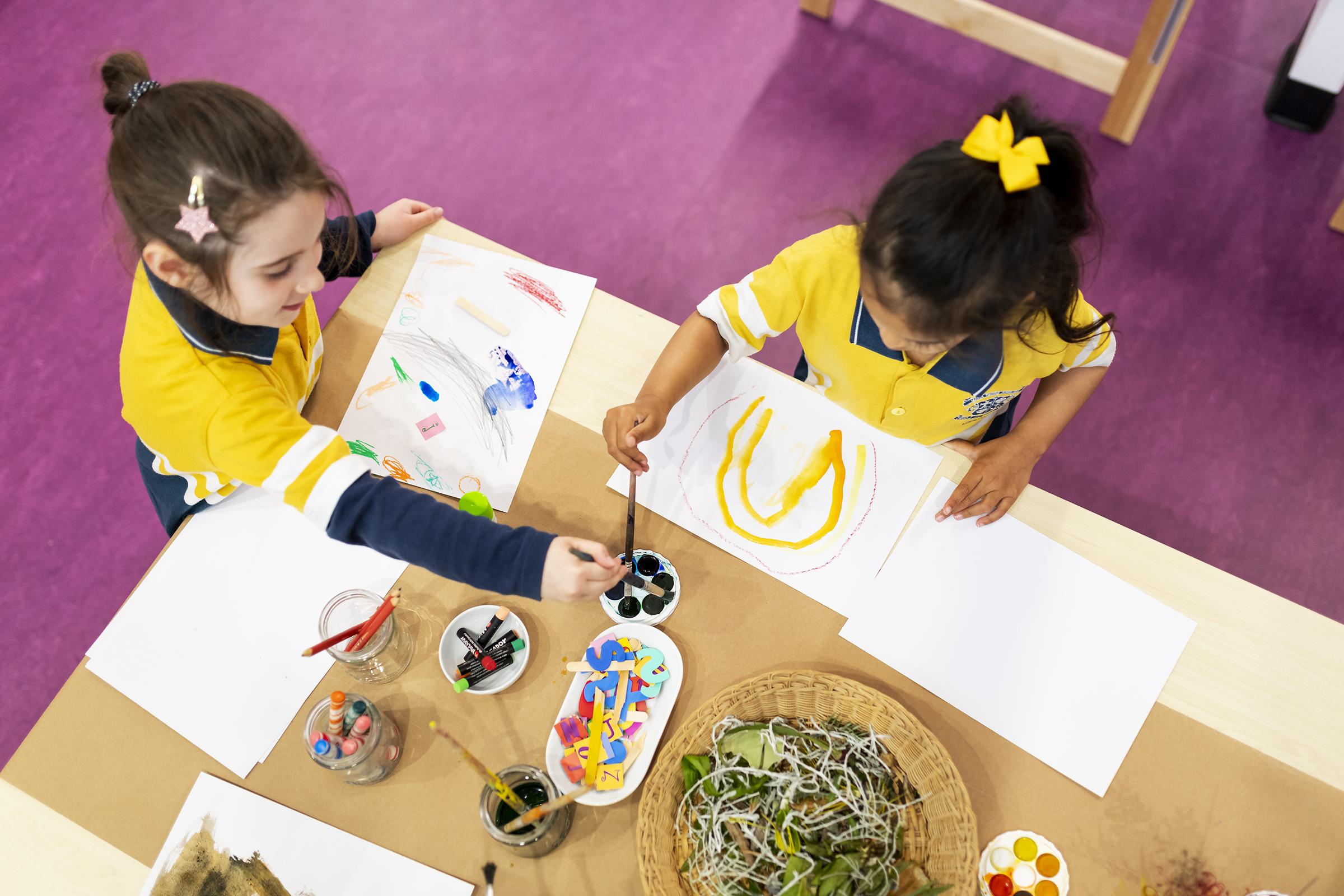
From the Head of Junior School & Early Learning
Following the easing of COVID restrictions, we are delighted to be planning a range of community events with our Parents and Friends Committee. The Parents and Friends of Loreto is a Parent group whose purpose is to promote and encourage Community Spirit within the College. They hold a number of events and activities each year including:
- Parent Welcome Evening
- Autumn Fair (biannual - 2023)
- Parent Gala (biannual - 2022)
- Loreto Ladies Luncheon
- Loreto SpringART Show
- Junior School and ELC Christmas Concert
- Second hand uniform shop
The Committee is comprised of members who represent a cross section of Parents from ELC – Year 12 and they are currently looking for new members from our Early Learning Centre to either join the Committee or Volunteer Pool. The Volunteer Pool works closely with the P&F Committee to assist with the various events and fundraising activities conducted throughout the year. This provides an opportunity for families to contribute as their schedule or time permits. Leading up to an event or community activity the P&F President or Committee members will contact people nominated in the Volunteer Pool to seek assistance.
To register your interest in any of the above, please click here and complete the form. We sincerely thank our P&F for the wonderful community events they organise for us all.
Ms Marika Snell
Head of Junior School & Early Learning
Preschool Information Evening
Join Ms Marika Snell and ELC Staff at the Preschool Information Evening:
Thursday 30 June, 5.15pm - 5.45pm
Preschool Room, Junior School
To register visit: https://events.humanitix.com/loreto-preschool-information-evening
Nominations for the Loreto P&F Committee, Volunteer Pool and Year Level Representatives
We have many great opportunities for Parents and Caregivers to become involved in our College Community. We are currently seeking nominations for the following roles:
Year Level Representatives ELC-12
The Year level/Class representatives act as the primary liaison between Class and year level Parents and the P&F Committee. These roles play a crucial part in maintaining and developing our Community spirit as they:
Parents & Friends Committee
The Parents and Friends of Loreto is a Parent group whose purpose is to promote and encourage Community Spirit within the College.
Parents and Friends Volunteer Pool
The Volunteer Pool works closely with the P&F Committee to assist with the various events and fundraising activities conducted throughout the year. This provides an opportunity for Parents and Carers to contribute as their schedule or time permits.
To register your interest in any of the above, please click here and complete the form.
We look forward to welcoming you to our wonderful College Community,
Charmaine Binns and Tanya Smith
Co P&F Presidents
Reconciliation Week in Banksia
The National Reconciliation Week 2022 theme, “Be Brave. Make Change.” is a challenge to all Australians— individuals, families, communities, organisations and government—to Be Brave and tackle the unfinished business of reconciliation so we can Make Change for the benefit of all Australians. We perceive reconciliation as sharing conversations and working together with First Nations people and the wider Australian community, acknowledging shared culture and history and it is crucial to promote reconciliation to overcome the inequality that exists today within our society.
In Banksia, we have been embracing Reconciliation Week through our provocations, our group times and our conversations. We have been learning more about Aboriginal and Torres Strait Islander cultures, histories and traditions. Each morning in Banksia we come together for our ‘Acknowledgement of Country’.
We the children and adults of Banksia, acknowledge that the Kaurna people were the first owners of the land we learn on.
We show respect to the traditional owners past, present and emerging.
Ngaityalya
(Ni-tali-ya - Thank you)
During our group times, we learnt how in Indigenous cultures; stories are very important. We read the Dreamtime story called "How the Birds Got Their Colours". Dreamtime stories are unique stories and beliefs owned and held by different Australian Aboriginal groups and by reading these stories, the children learn about the cultures of Aboriginal and Torres Strait Islander people and immerse themselves in the culture. The children reflected on the story…
”What colours can you see?”
Billy: I see red.
Stevie: I can see yellow.
Sophie: I can see blue.
Ada: Red!
Odette: Yellow.
Rozalia: Red.
Jack: All colours.
Max: Red
Spencer: Yellow
“How did the birds get their colours?”
Blakely - some magic
Elicia - the parrot got blood in their foot and they it went on their feathers.
William - the colourful bird fell in the water and splashed the colours on all the other birds
Elliot - when the bird was walking, he saw something an splashed into the colours and they made colours on the birds.
Mark-making with Aboriginal symbols
We provided children with sand trays and Aboriginal symbol cards to encourage their mark-making. Mark-making is crucial in early childhood as it enables the children to represent their thoughts and ideas, tell a story and express their feelings while they enjoy the sensory and physical experience.
Collage experiences with Australian animals and Australian maps
We set up collage experiences with Australian animals and Australian maps. The children were provided black, red and yellow collage materials (inspired by the colour of the Aboriginal flag), scissors to cut out the Australian animals, glue and a brush. By choosing collage materials and sticking them on the map, they developed their fine motor skills and familiarised themselves with the colours of the Aboriginal flag, the Australian map and native animals.
Ball Play in Gumnut
Ball play!
Engaging in ball play provides lots of opportunities for children to develop their skills. Free play with a ball can stimulate their critical thinking skills and creativity. What can I do with this ball? How hard can I throw it? How high can I throw it? Can I catch it? As children explore all of the different ways they can interact with the ball, they are building their motor skills, spatial skills and eye-hand coordination.
Ball play supports with sitting and balance as children reach forward or lean to the side to get the ball. Judging distance and tracking (eye movements) are evolved as they watch the ball move which is numeracy based learning, as they think about how far away is it, measuring in their young minds and developing spatial awareness with objects.
This week, ball play was extended in many ways and the children's excitement was evident as they were keen to investigate, sharing joy with others verbally and non-verbally, with squeals and waving arms of delight.
Our ball pit!
Firstly, we had a mini ball pit in the room all week which was a perfect way to spend the colder hours inside. Children approached this with varying levels of enthusiasm but even those who were less keen, watched others and then ended up getting involved with the fun that was spread! Children begun on the outer of the tub, reaching for balls, throwing them up, around and back into the pit. Then children began climbing in, sitting in the tub, surrounded by an abundance of mini coloured balls! The delight as they shuffled their legs and waved their arms through the layers of balls was so much fun and the laughter was contagious for all!
Children we’re heard saying many different words, such as “balls”, “more” “up” and “down” and the way in which they engaged with each other and educators was incredibly joyful and respectful. The Gumnut children have experience and knowledge of being with and around others and with minimal guidance were able to share the space and ‘take turns’, using words to share feelings and needs, including “in there”, “out”, “yes” and “no”.
The colours of balls were discussed and named, as were similarities when the colours of two balls being held were the “same”. Children were keen to hold out balls for educators to name the colours as well to help pack up, chasing balls round the room from behind them and round the room, collecting them and bringing them back to throw in the tub.
A ball ramp - with paint!
A ramp was added in our outdoor area, and children were encouraged to roll balls down with cues such as “1, 2, 3, GO!” The children were able to comprehend these cues, waiting for “go” before releasing the balls. Balls were placed at the top and let go, and children would then move around the ramp and others, to the bottom of the ramp to collect the balls and bring back to the top again, prompting more words such as “more” and “again”.
We blended the ramp, balls and art together to further extend on children's growing interests. This was messy and fun! Paper was attached to the ramp and the balls were dipped in paint before being rolled down, leaving marks and various patterns on the paper. Again, the children responded to cues, and enjoyed repeating the actions, discovering more about cause and effect as well as expressing creative in a different way.
A Week with Wattle
Reconciliation Week
This week we acknowledged Reconciliation Week throughout the ELC, incorporating provocations into programs that reflect the Indigenous and Torres Strait Islander people. We embed this throughout the term, however this week it has had an increase in focus to align with Reconciliation celebrations across Australia.
Every day we sing our Niina Marni welcome song and children respond positively to the words, tapping their hands onto their knees as we sing everyone's name in acknowledgement. We then tap the floor and say 'hello land', we then wave our arms up high and say 'hello sky', followed by hugging ourselves and saying 'hello me' and lastly 'hello friends' and waving to each other. We extended this, by introducing new songs incorporating the Niina Marni words along with musical instruments. The children had so much fun experimenting, making unique sounds of big loud sounds and soft more quiet sounds. Children introduced new ideas to their play, when they sought out different objects to bang and crash together developing new sounds. We watched as children used maraca's to tap the tambourines and listened to the unique effects it was making. This experience really brought the group together as they created their own beats, experimenting with the many ways to use the instruments immerging from their ideas.
Books, Mark Making and Rice Play - Making Connections with the Indigenous People, Their Land and Beliefs
Songs and books were shared throughout the day, and every morning at group time, Natalie read the book 'Finding our Heart' written by Thomas Mayor. Books were also presented on the drawing table along with paintings and symbols reflecting the Indigenous people and their values and beliefs. Children used pencils to create marks and lines all over the brown butchers paper. As our Wattle children have a strong interest in sensory exploration, along with playdough this week, coloured rice trays were set up with placemats and symbols and patterns which represent the Indigenous people. The trays were filled with red, yellow and black rice and children were encouraged to use their hands or thin paint brushes to work with this medium. At times children referred back to the placemats and were mixing the colours, swishing it around the individual trays, forming shapes and patterns.
We could see there was lots of fun happening as children worked independently or alongside their peers. It provided children with calmness, open- ended opportunities and unhurried time where they could develop their fine motor muscles.






